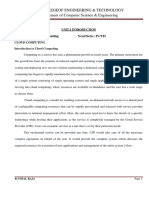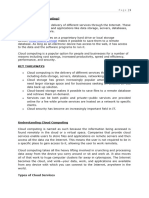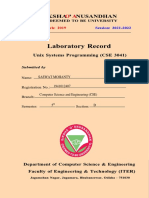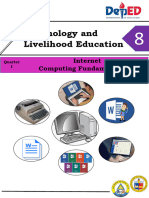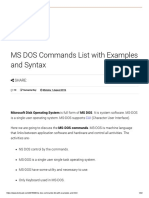0% found this document useful (0 votes)
48 views29 pagesChapter 3 Basics of Cloud Computing
Cloud computing is the storage and access of data and computing services over the internet, allowing users to utilize resources without maintaining physical infrastructure. It offers various types of clouds, including public, private, hybrid, and community clouds, catering to different organizational needs. The benefits of cloud computing include reduced costs, improved performance, and scalability, making it suitable for various applications in healthcare, education, and business processes.
Uploaded by
NotesCopyright
© © All Rights Reserved
We take content rights seriously. If you suspect this is your content, claim it here.
Available Formats
Download as PDF, TXT or read online on Scribd
0% found this document useful (0 votes)
48 views29 pagesChapter 3 Basics of Cloud Computing
Cloud computing is the storage and access of data and computing services over the internet, allowing users to utilize resources without maintaining physical infrastructure. It offers various types of clouds, including public, private, hybrid, and community clouds, catering to different organizational needs. The benefits of cloud computing include reduced costs, improved performance, and scalability, making it suitable for various applications in healthcare, education, and business processes.
Uploaded by
NotesCopyright
© © All Rights Reserved
We take content rights seriously. If you suspect this is your content, claim it here.
Available Formats
Download as PDF, TXT or read online on Scribd
/ 29

















